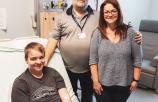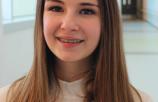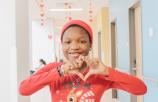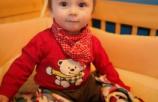Understanding spina bifida
Tamara Di Giglio was 16 weeks pregnant when she found out she was having twins. A time that would normally be exciting, however, was mixed with worry and fear when she learned there were complications with the fetuses, and that one of the twins had a spinal malformation that would prevent him from walking. When Tristan was born, he was diagnosed with spina bifida as well as several other conditions, and in the first few years of his life, he had to undergo many surgeries. Tristan is followed by several specialties at the Montreal Children’s Hospital including the Spina Bifida Program.
What is Spina Bifida?
Spina bifida is a condition that occurs very early on in pregnancy, around day 21, when the fetus’s neural tube develops. As the fetus grows, the vertebra arches that normally protect the spinal cord don’t form properly so the spinal cord and its coverings are not protected and form a sac that bulges out from the spine. This sac is known as a “cele” and it is covered by a tissue called the “meninges”. The nerves in the affected area do not develop properly either. The severity of the newborn’s spina bifida depends on where the spinal cord is exposed. In general, children with a cele at a higher level will have more deficits.
What are the problems associated with spina bifida?
More severe forms of spina bifida can be detected by ultrasound at 16 to 20 weeks, but the less severe forms might only be diagnosed after the child is born. In more severe cases, a child will not be able to walk or will need braces in order to ambulate.
Hydrocephalus, a condition in which cerebrospinal fluid (CSF) accumulates in the brain, is also a problem for children with spina bifida. It occurs when the normal circulation of fluid that goes from the brain around the spinal cord does not circulate properly. Neurosurgeons treat hydrocephalus by putting a shunt in the brain to help drain and redirect fluid to the abdomen. Children with hydrocephalus may have some degree of intellectual difficulty.
Bladder and bowel problems occur to varying degree in almost all children with spina bifida. Many will need daily catheterization to drain the bladder.
A child may also have little or no feeling in some areas of their skin due to certain nerves not developing properly when spina bifida occurs. The lack of sensation means they may not feel heat or cold, or not realize when they get a cut.
Are there risk factors for developing spina bifida?
There is no single factor that can be identified as a cause of spina bifida. Researchers have looked at genetics, the baby’s environment and the mother’s diet as possible causes, but these are not defining factors.
Research has shown that folic acid may prevent neural tube defects. If a woman is planning to become pregnant, there is a greater chance of preventing spina bifida if she has sufficient folate levels. It should be noted however, that it may not always hold true: the fact that twins are born where one has spina bifida and the other doesn’t shows that other factors play a role in the development of the condition.
There is no harm in taking a supplement in the short term and most maternity vitamins contain the recommended amount of folic acid. A woman should take daily supplements three months before she gets pregnant and continue taking them into the first couple of months of pregnancy. Women with a history of spina bifida in their family should take a higher dose (4 mg).
A brighter future than before
Most children living with spina bifida have a better quality of life than in decades past, being more fully integrated into schools and community activities. One of the key reasons is the availability of better treatment at earlier stages, including follow-up from multidisciplinary teams like the one at the Montreal Children’s Hospital which includes a pediatrician, neurosurgeon, urologist, orthopedic surgeon and physiotherapist.
Tristan’s mother Tamara knows what’s possible. “We’d been told originally that Tristan might not live, but he beat the odds.” Tristan uses a wheelchair to get around, but it doesn’t hold him back from being active in sports and at school. He even has his sights set on the Olympics one day. “I always knew he would turn out to be an amazing kid,” says Tamara.










